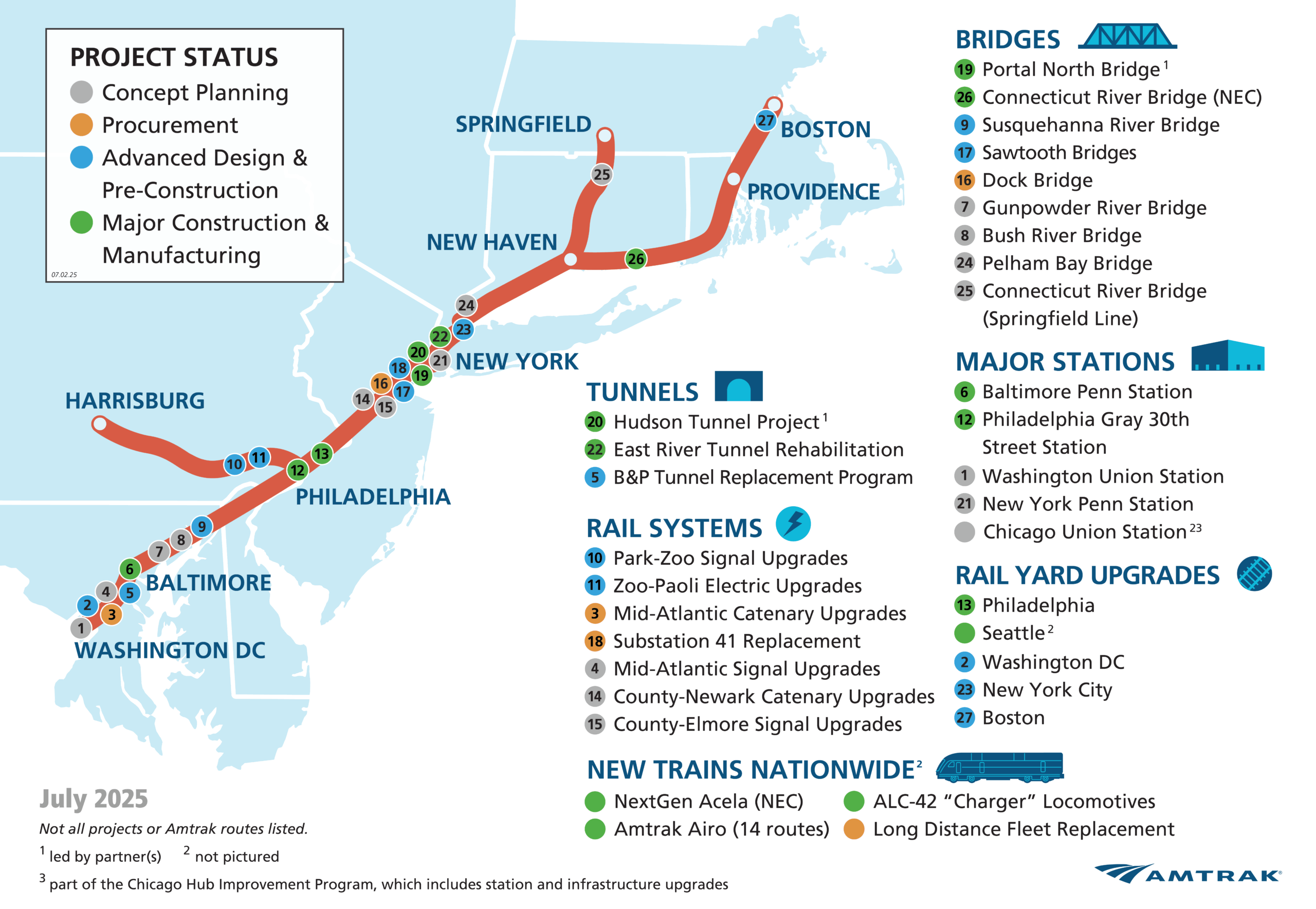Network Rail has completed a year-long project to strengthen the High Level Bridge over the River Tyne.
Network Rail invested 5.2 million GBP to overhaul the underside of this Victorian-built structure, connecting Gateshead and Newcastle.

Designed by Robert Stephenson and completed in 1849, the High Level Bridge was the first double-decker road and railway bridge in the world. Its innovative design allowed for both road and rail traffic, a groundbreaking achievement at its time.
The 175-year-old bridge requires regular maintenance. This latest project by Network Rail, in partnership with contractor AmcoGiffen, focused on several key improvements:
- Structural Beams: Grit blasting and repainting to prevent corrosion
- Wrought Ironwork: Repairs across the bridge at road and pedestrian levels
- Road Deck: Waterproofing and improving drainage to protect the beams below
- Carriageway: Resurfacing for a smoother ride for cyclists and road traffic
The project used 3,300 litres of paint, including primer, mid-coat, and top coat. A total of 283 structural beams across the bridge’s six spans were painted. Furthermore, 2.6 kilometres of road drainage was repaired, waterproofed, and resurfaced.

Sean Ellerby, Network Rail scheme project manager, said:While much of the work has been happening out of sight beneath the road and walkways, it’s been a huge job to secure the future of this world-first bridge and important link for rail and road between Gateshead and Newcastle.
I’d like to thank residents’ patience while much of our work had to take place at night, and also road users and pedestrians who’ve been impacted by the scaffolding as we’ve worked around the clock to keep High Level Bridge fit for the future and safe for trains, traffic and pedestrians.
Throughout the project, train journeys were unaffected, with all services running as normal on the top bridge deck. This was made possible by a complex scaffolding system that was hung from the bridge without interfering with the original ironwork.
Chris Pennock, AmcoGiffen framework director, said:We’re pleased to complete the extensive repairs and improvements safely and successfully at High Level Bridge on behalf of Network Rail. This significant investment has revitalised the 175-year-old landmark and will preserve its structural integrity and historical significance for years to come.

























